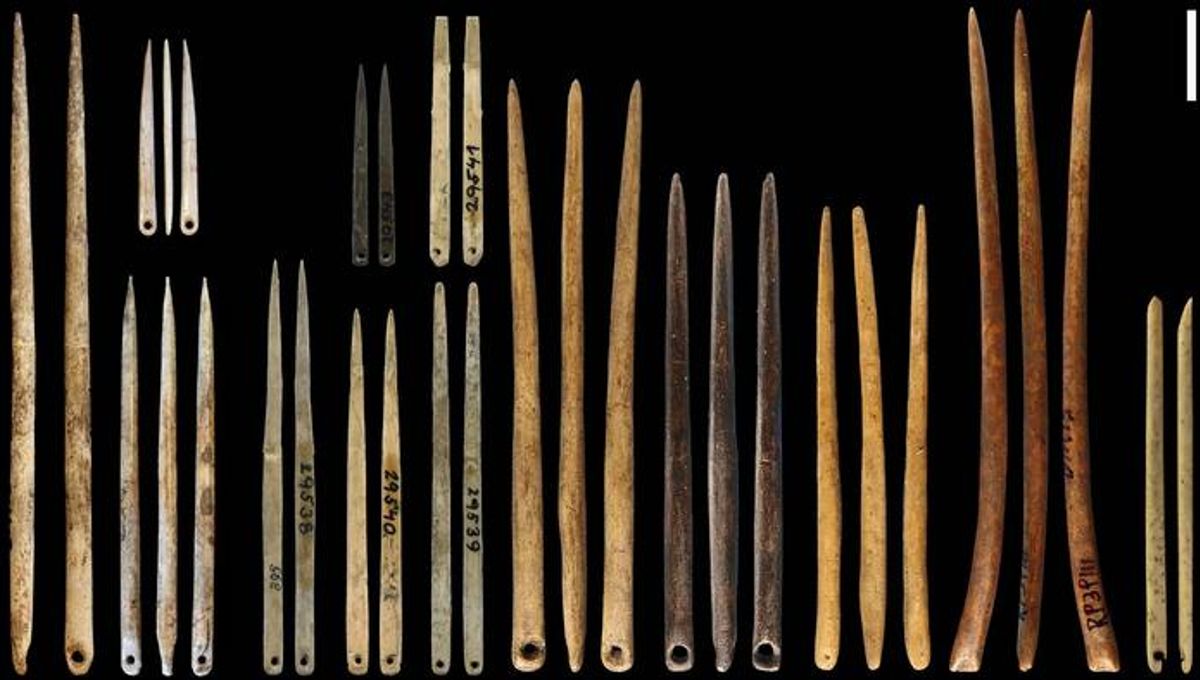
Whether you prefer briefs, a thong, or even a jockstrap, the garments with which you furnish your undercarriage may descend from an ancestral pair of undies that were first worn in a chilly Siberian cave 40,000 years ago. At least, that’s the conclusion of a new analysis of the world’s earliest eyed sewing needles, which date back to the Last Glacial Maximum in the famous Denisova Cave.
As the researchers point out, humans had been tailoring clothing using bone awls – which are essentially eyeless needles – since at least 70,000 years ago. The later production of eyed needles, however, would have been a highly labor-intensive process for ancient hunter-gatherers, raising questions as to why they would bother going to all that trouble when awls were perfectly sufficient for manufacturing basic outfits.
Tellingly, the appearance of these more sophisticated sewing tools at the Denisova cave – which was occupied by Denisovans, Neanderthals, and modern humans over a period of around 100,000 years – coincides with a drastic drop in global temperatures during the Ice Age. As the freeze set in, people may have needed to wear more layers, and the production of eyed needles may have allowed for “more refined, efficient sewing,” thus facilitating the creation of life-saving underwear.
“The effectiveness of adding extra layers to improve insulation derives from the basic thermal principle of clothing, namely, trapping air near the skin surface to reduce the rate of convective heat loss,” write the study authors. “An association between eyed needles and a physiological need for more thermally effective fitted clothing is apparent,” they continue, adding that “a link with underwear has been posited.”
Sadly, however, they concede that “despite the logic, convincing evidence for underwear in the late Pleistocene is scant.”
Adding an extra layer to their theory, the researchers go on to say that the need to cover up would have limited possibilities for self-expression through body decoration. Prior to this point in history, humans tended to embellish their skin with red ocher, tattoos, and deliberate scarring for a variety of symbolic purposes, none of which would have been visible through clothing.
The researchers therefore suggest that eyed sewing needles might also have allowed ancient humans to create more elaborate clothing, enabling them to express themselves and communicate through fashion instead of body art.
“Eyed needle tools are an important development in prehistory because they document a transition in the function of clothing from utilitarian to social purposes,” explained study author Dr Ian Gilligan in a statement. “Eyed needles would have been especially useful for the very fine sewing that was required to decorate clothing.”
In their write-up, the researchers speculate that such decorations may have involved the attachment of shell beads or fur trims to animal-hide garments.
“The benefits of manufacturing eyed needles – facilitating finer sewing by hand and rendering the task of sewing more efficient – may pertain to adornment of clothes and also the need for underwear in multilayered garment assemblages,” they write.
“These two different purposes actually coincide, since the thermal need for underwear corresponds to a more complete and continuous use of clothing, which, in turn, would favor a shift from decorating the skin surface to adorning the more visible surface of clothes,” add the study authors.
The study is published in the journal Science Advances.
Source Link: Paleolithic Humans May Have Invented Underwear 40,000 Years Ago